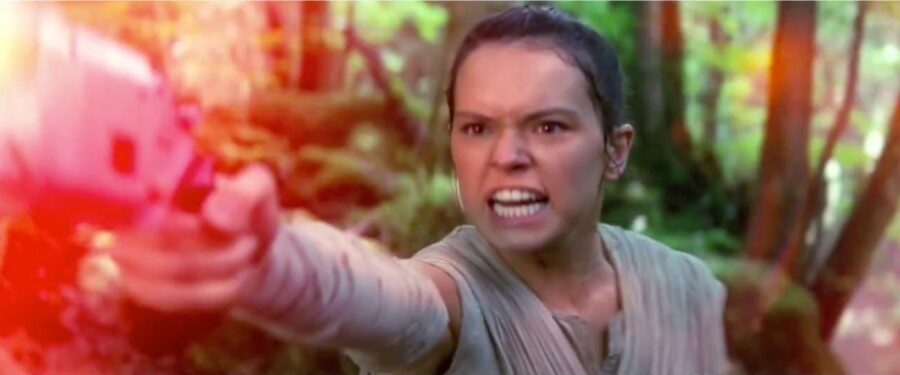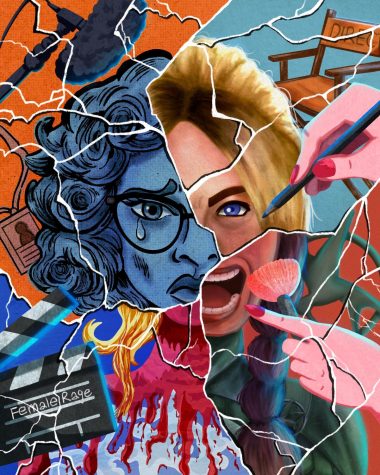Everyone is wondering: #WhereisRey
The inherent sexism of toy companies is being challenged as social media forces them to comply with popular opinion.
Star Wars: The Force Awakens spoiler alert: It is clear that Rey is, without a doubt, the lead, hero and center going forward in the Star Wars universe. So why in the world would companies not release toys of her?
Over the past few days, it’s been brought to public attention that the new Star Wars Monopoly neglected to include Rey as a character figurine, instead settling on Finn, Kylo Ren, Luke Skywalker and Darth Vader. If you’ve seen the film, you know Luke only makes a cameo appearance and that Darth Vader doesn’t even appear at all, unless you count the enshrined, crusty, half-melted remnants of his helmet as an appearance.

When initially questioned, Hasbro wrote off Rey not appearing in Monopoly as a way to avoid revealing that “she takes on Kylo Ren and joins the Rebel Alliance.”
Now, I don’t know about you, but I think those are just about the two most generic spoilers ever and they certainly were suggested, if not fully revealed, in every trailer. Additionally, how would including a figure of Rey reveal her role in the film? She was already featured just as prominently in the promotional material as the other lead cast members.
After continued pressure from the media and Internet social outcry, Hasbro has announced that Rey will be included in an updated version of the game.
Other toys for the film, including Hasbro’s Millennium Falcon, have also neglected to include Rey — which is strange considering the plot of the film.
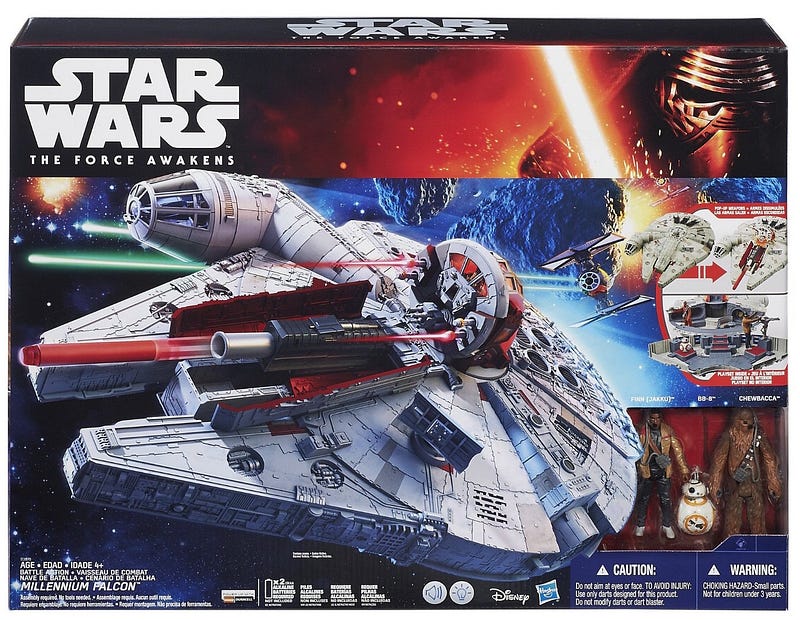
This “Target Exclusive” set of figures, also from Hasbro, finds Rey suspiciously missing. Included, however, are two generic First Order troops instead of another more prominent character, Captain Phasma. Yes, she’s a girl too.
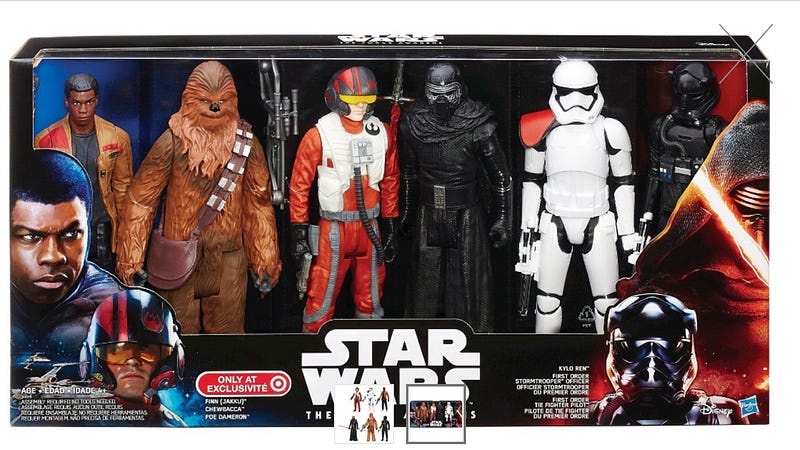
Star Wars: The Force Awakens toys are not an isolated incident. Recently, a similar PR disaster happened when Black Widow (and Scarlet Witch) found themselves absent from the Avengers: Age of Ultron toys of future landfill fodder. Before that, Gamora was clearly missing from Guardians of the Galaxy merchandise. The examples are far too plentiful to be considered coincidence.
Even toy box art can sometimes be questionable. For example, though LEGO features female heroes in their sets, any fan of the Avengers: Age of Ultron will quickly notice that LEGO’s Avengers Quinjet City Chase set portrays Black Widow in a sidelined role on product box art that is completely inaccurate to her role in the film.

In this particular LEGO set, Black Widow is seen piloting the a jet with Captain America on the motorcycle. Yet, in the scene from the movie, it is Black Widow on the motorcycle. Why did LEGO choose to put Black Widow inside a jet she didn’t pilot instead of on the kick-ass motor cycle she did ride?
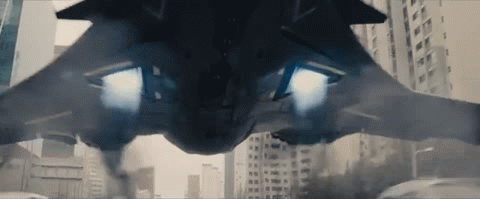
You can find the same case in Hasbro’s Quinjet, except Black Widow doesn’t appear in the toy at all.
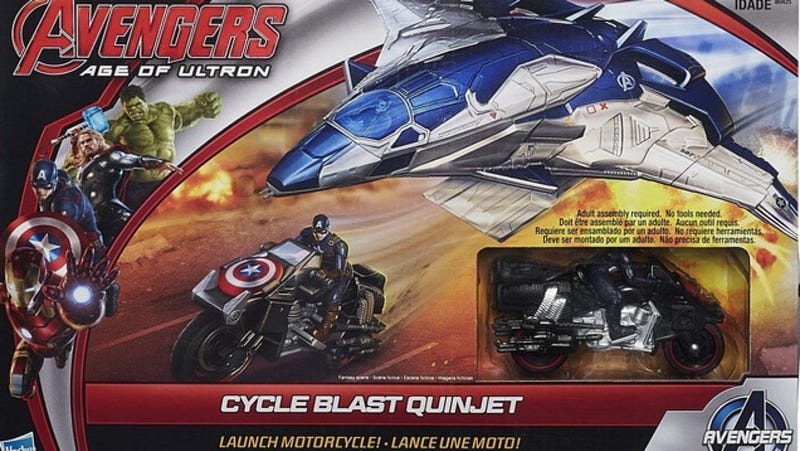
So even though LEGO is finally including female heroes in their sets and Hasbro and other companies are giving into pressure and planning to release Rey toys, is it enough to make toy companies think twice in the future?
Let’s swing this conversation back around to the why. Why do these Disney owned properties sideline or eliminate female members of their cast in licensed merchandise? Some sources say it’s because Disney has the girls’ market locked up with their own properties, and that Disney wants to capitalize on the boys using Star Wars and Marvel. In that case then, is our society so gender-divided and sexist that there can be absolutely no crossover?
I find that very hard to believe. In my experience, my younger sister and her friends play indiscriminately with toys traditionally marketed to boys and to girls. Even Star Wars: The Force Awakens director J.J. Abrams hoped to change the perception of Star Wars to make it less of a “boys’ thing.”
Society will forever be a series of people moving forward at their own paces, but since there seems to be no discontinuation of action films including badass female leads, it’s with these popular franchises that we will most likely see a new generation of families insisting on toys that cross the gender divide.
Even Target is taking progressive steps forward, recently making headlines for working to eliminate gender-based signage and color-coded shelving.
As is clear by the example of a revised Star Wars Monopoly that includes Rey now in the works, social outcry is a palpable force that can push these out-dated companies to change and pull their toys out of the sexist patriarchal chasm that has somehow corrupted today’s toys. This outcry can give an accurate representation of not only the toys from the films they license, but the children to whom they are marketed to. Hopefully, this will pull us all into a brighter future far beyond the pink and blue.

